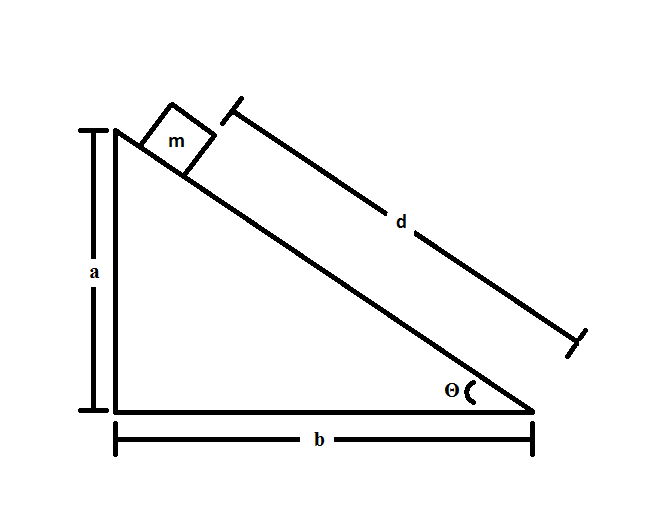Normal Force and Weight
Help Questions
AP Physics 1 › Normal Force and Weight
How will the normal force exerted by a chair on an astronaut differ when the rocket is on the launchpad or when it is blasting off?
The normal force will be more during blastoff
The normal force will be less during blastoff
None of these
Impossible to determine
The normal force will be zero
Explanation
Concerning the astronaut:
The force of gravity will be essentially constant and downward. Thus, in order for acceleration of the astronaut to increase, the normal force must increase.
A block of iron with mass 10kg is sitting on an incline that has an angle of 30 degrees above horizontal. What is the normal force on the block of iron?
Explanation
The free body diagram of the system is shown below:


Since 

If you're confused as why it's cosine and not sine, think about the system practically. The flatter the slope is, the greater the normal force. The smaller an angle becomes (creating a flatter slope), the greater the value of cosine becomes, and subsequently the greater the normal force becomes.
Now we can simply plug in our given values:
What is the normal force of a 
Explanation
To begin solving our problem, we will create a free body diagram, labeling all our forces and the direction in which they are acting.

The normal force, 

Where 


Since our object is at rest, 
Assuming 
Substituting in the definition of weight, 

Since 
Consider the following system:

If the normal force on the block is 

Explanation
We need to develop an expression for the normal force on the block to solve this problem:
If you are unsure of whether to use sine or cosine, think about the system practically: the flatter the system gets, the larger the normal force will become; hence the use of the cosine function.
Rearranging for mass, we get:
What is the normal force acting on a 

Explanation
To begin solving our problem, we will create a free body diagram, labeling all our forces and the direction in which they are acting.

The normal force, 


To find the normal force, we will begin with Newton's 2nd law:
Where 


Since our object is at rest, 
Assuming 
Substituting in the definition of weight, 

Since 

What is the normal force of a 

Explanation
To begin solving our problem, we will create a free body diagram, labeling all our forces and the direction in which they are acting.

The normal force, 

Weight must be divided into two components, the parts acting parallel and perpendicular to the contact surface.



To find the normal force, we will begin with Newton's 2nd law:
Where 


Since our object is at rest, 
To find 

Assuming 
Substituting in 

Since 

Consider the following system:

If the block travels down the slope at a constant speed and the coefficient of kinetic friction is 
Explanation
There are two forces in play in this scenario. The first is gravity and the second is friction. Both depend on the angle of the slope. Since the block is traveling at a constant rate, we know the the gravitational and frictional force in the direction of the slope cancel each other out, and the net force is zero (there is no acceleration). Therefore, we can write:
Substituting in expressions for each force, we get:
If you are unsure of whether to use cosine or sine for each force, think about the situation practically. The flatter the slope gets, the less the force of gravity will have an effect on moving the block down the plane, hence the use of the sine function. Also, the flatter the slope gets, the greater the normal force will become, hence the use of the cosine function.
Canceling out mass and solving for the angle on one side of the equation, we get:
This is an important property to know! When an object travels down a slope at a constant rate, the tangent of the angle of the slope is equal to the coefficient of kinetic friction.
A 


Explanation
This question tests your understanding of the concept of normal force. In a block that remains stationary, in which the only two forces acting upon it are the force of gravity, and normal force, you therefore know that the normal force must be equal to the force of gravity, since the block is not accelerating or decelerating (i.e. the sum of the forces is equal to zero).
Thus, we can set the normal force equal to the force of gravity, and solve as follows:
Therefore, the normal force exerted on the block by the ground is 
Determine the gravitational constant 


Explanation
Using Newton's second law, we can determine the answer.
In our problem, 


An object with a mass of 10kg is resting on a horizontal table. What is the normal force acting on the object?
Explanation
The normal force points perpendicular to the force of gravity (opposite direction) and is equal in magnitude. Because the force of gravity is equal to 



















































































